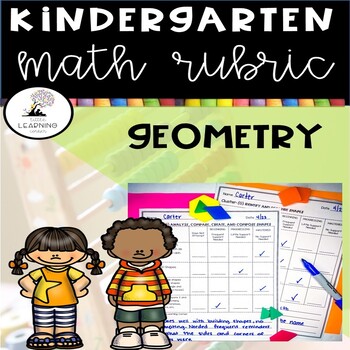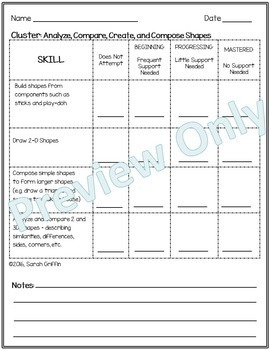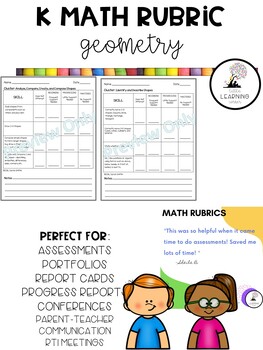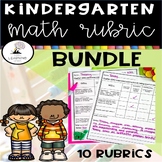Kindergarten Math Rubric GEOMETRY | Assessments Data Collection
- PDF
Also included in
- Kindergarten rubrics for all 5 common core math domains and standards. Just print and go! Great for student records, assessments, portfolios, RTI, data collection, parent conferences, progress reports, anecdotal records, and report cards. CONTENTS1 rubric for Number and Operations - Base Ten2 rubriPrice $9.97Original Price $14.50Save $4.53
Description
A printable kindergarten rubric or math assessment tool for the Common Core State Standards in mathematics.
This rubric is for the Geometry domain; the clusters are to identify 2-D and 3-D shapes, and analyze, compare, and draw shapes.
Great tool to record students skill abilities ranging from No Effort to Mastered- No Support Needed.
Use during observation in centers, activities, or after completing formal assessments. Copy and share with parents, keep in student portfolio, or use in RTI meetings.
CONTENTS
1 Rubric for the Geometry Cluster: Analyze, Compare, Create, and Compose Shapes
1 Rubric for the Geometry Cluster: Identify and Describe Shapes.
SAVE when you purchase my bundle Packet of Math Rubrics.
Bundle Math Kindergarten Rubrics
You May Also Be Interested In:
***************************************************************************






